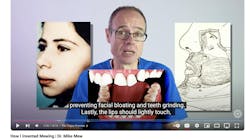Scientific proof of ‘meth mouth’: UCLA study clarifies the oral consequences of methamphetamine use
"Meth mouth" has largely been based on anecdotal evidence—until now.
Findings
A multidisciplinary group of researchers from the UCLA School of Dentistry, the UCLA Fielding School of Public Health, and the UCLA Integrated Substance Abuse Program have published new findings that provide conclusive evidence of disproportionately high rates of dental disease in methamphetamine abusers.
In the largest study of meth abusers to date, Vivek Shetty, DDS, Dr.Med.Dent., and his colleagues systematically investigated the patterns and severity of dental disease in 571 meth abusers. The team found that over 96% of those studied experienced dental cavities and 58% had untreated tooth decay. Only 23% retained all of their natural teeth, compared 48% for the general population in the United States.
The study also found that female methamphetamine abusers had higher rates of tooth loss and decay, as well as a greater prevalence of cavities in the front teeth.
The researchers also looked at the rate of periodontitis among meth abusers. They found that it was unusually high, with more than 89% showing total periodontitis. Methamphetamine abusers who were older, who were African American, or who smoked cigarettes were more likely to suffer from severe periodontitis.
The study also found that 40% of the methamphetamine abusers were self-conscious or embarrassed about the condition of their teeth or dentures.
READ MORE | Meth mouth and the ravages of an addiction: from a dental perspective
Impact
The study provides valuable research and public health insight into the oral health of meth abusers and informs general health providers and addiction specialists about the oral health problems in meth abusers. The prevalence and patterns of dental and periodontal disease could alert dentists to undisclosed meth use in their patients and help in the development of treatment plans.
The high rates of dental disease and the concerns about dental appearance among abusers could be used by dentists as the basis for screening, brief behavioral interventions, and referrals for treatment.
Background
According to the National Institute on Drug Abuse, over 12 million people have tried methamphetamines at least once. The consequences of abusing this drug can include mental disorders, extreme weight loss, skin sores, and severe dental problems, known as “meth mouth.” Prior to this study, the evidence for meth mouth was largely anecdotal.
Author
The study’s first author and principal investigator is Dr. Vivek Shetty, professor of oral and maxillofacial surgery at the UCLA School of Dentistry.
Funding
National Institute on Drug Abuse grant (R01DA025680)
Journal
The findings have been published online and will appear as the lead article in the December 1 print edition of the Journal of the American Dental Association.
Source: UCLA press release 30 November 2015







